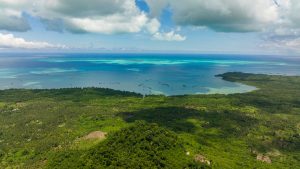The Philippines has revealed the location of the four additional military facilities that will host a rotational U.S. troop presence under a 2014 defense pact.
In a statement yesterday, the U.S. Department of Defense announced that the four sites include three in the north of the country: Naval Base Camilo Osias and Lal-lo Airport in Cagayan, and Camp Melchor Dela Cruz in Isabela. The fourth site will be Balabac Island in Palawan.
“The United States and the Philippines have stood shoulder-to-shoulder as friends and allies for more than seven decades, unwavering in our treaty commitments and our shared vision for a more peaceful, secure, and prosperous region,” the statement read. “The strides we are making to expand the EDCA and modernize the alliance will ensure this vision endures far into the future.”
In February, President Ferdinand Marcos Jr.’s administration agreed to allow the U.S. military access to four additional Philippine military bases under the Enhanced Defense Cooperation Agreement (EDCA). The agreement allows the U.S. rotational access to a select number of military facilities – initially five – nominated by the Philippine government. Under the terms of EDCA, the U.S. military is permitted to use facilities such as runways, fuel storage, and military housing.
The U.S. government has also announced more than $80 million worth of infrastructure upgrades at the five existing EDCA facilities.
As widely expected, the newly selected sites in Cagayan and Isabela sit near Taiwan, the subject of growing tension between the U.S. and China. Balabac Island, which is located at the remote southwestern tip of the island of Palawan, is the major Philippine island closest to the disputed Spratly Islands in the South China Sea, where China and the Philippines have dueling maritime and territorial claims. It also lies in close proximity to the Sulu Sea, where pirates and armed insurgents have long held sway. Wikipedia describes Balabac as “the westernmost undisputed island in the Philippines.”
According to Reuters, Defense Secretary Carlito Galvez described the sites as “very strategic” and said that the Philippines felt that it had a responsibility to uphold international law in the South China Sea. The economically pivotal waterway is the source of a complex series of disputes between China, which claims the majority of the waterway under its “nine-dash line” claim, and four Southeast Asian nations: the Philippines, Vietnam, Malaysia, and Brunei. Indonesia also has overlapping claims with China, though it prefers not to refer to itself as a formal claimant.
“That’s a trade route… where more or less $3 trillion trade passes (annually),” Galvez said, according to the news agency. “Our responsibility to collectively secure that is huge.”
The expansion of EDCA encapsulates the rapid improvement in the U.S.-Philippines relationship that has taken place over the past two years, particularly since Marcos took office last July. Compared with his predecessor Rodrigo Duterte, who initiated a sharp turn toward Beijing and spurned the U.S. alliance, Marcos’ administration has been much more willing to publicize and denounce assertive Chinese actions in disputed parts of the South China Sea, where Chinese coast guard and maritime militia vessels frequently “swarm” Philippine-claimed features and chase Filipino fishermen away from customary fishing grounds.
While EDCA will not create a permanent U.S. military presence in the Philippines, it will create the largest American military footprint there since 1991-92, when the U.S. was forced, by the combined impact of an anti-base political campaign and the eruption of nearby Mt. Pinatubo, to close its gargantuan military facilities at Subic Bay and Clark.
As such, the announcement of the EDCA upgrade has prompted no small amount of controversy in the Philippines, with some questioning the focus on the north of the country, given that the main threats to Philippine sovereignty lie in the west. One of the dissenters, at least initially, was Manuel Mamba, the governor of Cagayan, who expressed fears that the establishment of an EDCA site in his province could dissuade Chinese investors and potentially place the northern part of the Philippines on the frontline of a U.S.-China conflict over Taiwan.
The Philippine and U.S. governments have claimed, somewhat disingenuously, that the purpose of the expansion of EDCA is to provide support for humanitarian and disaster relief missions. While this is certainly true, it is hard to imagine such a step being taken in the absence of an external catalyst (i.e., China), which has prompted similar – though not identical – concerns among policymakers in Manila and Washington.
The Marcos administration has also defended its decision to expand EDCA in more explicit terms, arguing that it is necessary to defend Philippine territory. “This is not a question of taking sides or staying neutral; neither is it a question of war or peace. This is about upholding our national interest – a defense strategy in deterring any form of aggression,” Jose Manuel Romualdez, the Philippine ambassador to the U.S., wrote last month.

































